Learn How You Can Improve Your Child's Vestibular System and Proprioception at an Adventure Summer Camp
Adventure activities such as rock climbing, mountain biking, hiking, wakeboarding, water skiing and horseback riding are ideal developmental mediums for balance, body awareness, and coordination. This includes bilateral integration which is the use of both sides of our body at the same time). These adventure activities require balance and coordination, and as you improve and develop withing these sports the levels of balance and coordination needed continues to rise. Most of us learn about the 5 basic “extrinsic” senses of sight, sound, taste, touch and smell. Many of us do not learn about two very important “hidden intrinsic” senses known as the vestibular and proprioceptive senses.
This blog post is intended to act as an introduction to understanding your vestibular system/sense (balance and coordination), proprioception (body awareness) and their inherent relationship to adventure activities, and how adventure activities require you to maximize your potential if you are to continue developing with them.
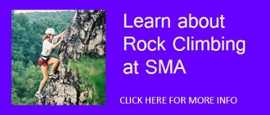 The American urban and sub-urban environments do not tend to offer many opportunities to get to know, and thus, master our ability to balance and coordinate our whole selves. Nor, does our success in everyday societal life tend to depend on our amount of body awareness. Balance and body awareness are experientially learned abilities, meaning if you never experience them you will never develop them. Continued exposure and experience gives us opportunities to learn about, assess, and master…most anything! Crawling, childhood play, and organized sports is where most of our relationships begin and end with balance, body awareness and coordination. This lack of exposure in most Americans everyday life to activities and experiences that require an understanding and extensive use of balance (amoung other things) is exactly why adventure based activities are so important! To maximize your overall potential as a human being, you have to address your understanding of, and relationship with balance, body awareness and coordination. Period.
The American urban and sub-urban environments do not tend to offer many opportunities to get to know, and thus, master our ability to balance and coordinate our whole selves. Nor, does our success in everyday societal life tend to depend on our amount of body awareness. Balance and body awareness are experientially learned abilities, meaning if you never experience them you will never develop them. Continued exposure and experience gives us opportunities to learn about, assess, and master…most anything! Crawling, childhood play, and organized sports is where most of our relationships begin and end with balance, body awareness and coordination. This lack of exposure in most Americans everyday life to activities and experiences that require an understanding and extensive use of balance (amoung other things) is exactly why adventure based activities are so important! To maximize your overall potential as a human being, you have to address your understanding of, and relationship with balance, body awareness and coordination. Period.
Staying balanced over a wakeboard, precarious rock climbing footholds on a crag, a mountain bike or skis requires constant balance, body awareness and coordination. Everyday common tasks such as sitting at your desk or in front of your television, walking to your car or class ordriving pushes you very little to get better at balancing, or getting to know yourself at all in any really valuable way. Adventure activities force you to get to know yourself at an expedited rate, compared to modern everyday societal life. Attending one of the many overnight adventure summer camps for teens that offer adventure activities is a fantastic way to have the opportunity to be exposed to these activities.
Let’s begin our understanding by starting with some definitions and explanations –
The vestibular system is our “movement and balance” sense. It has the most wide-spread influence in our daily lives, and is “on” 24 hours a day, 7 days a week at an unconscious level. When your vestibular system is doing its job efficiently and effectively it frees up all the rest of your central nervous system for higher cognitive/executive functioning, motor planning, etc. This system is the first sensory system to develop by 12-14 weeks of gestation.
The vestibular system helps us by:
 Keeping our balance
Keeping our balance- Coordinating the movement of our head with our eyes
- Using and coordinating both sides of our body at the same time
- Feeling the direction and speed of movement
- Keeping us upright against the pull of gravity
How your Vestibluar System Works: You have “vestibular receptors” in your inner ear that provides you with vital information about movement, balance, body orientation, gravity pull and vibration. These vestibular receptors live in our inner ears and include 3 semicircular fluid filled canals. When a certain canal gets stimulated it sends that information to your brain for further processing.
What is Proprioception? The word “proprioceptive” is derived from the Latin word “proprius” or “own.” Proprioception is our own body sense, an “ability to transmit a sense of position in space, analyze that information, and react (consciously or unconsciously) to the stimulation with proper movement” (Tarrant, Houglum 2003). Proprioception simply put, is the ability to know where a body part is withou t having to look.
t having to look.
How Proprioceptio Works: You have “proprioceptors” within your skin, muscles, joints and tendons. These proprioceptors consist of both sensory and motor nerves that send and receive impulses to and from the central nervous system. The impulses transmit vital information such as the amount of tension in a given muscle and the relative position of a body part during any given movement. The “Proprioceptive System” is located primarily in the cerebellum, and it works closely with the Vestibular System and Tactile System (sensory receptors in your skin).
Getting to Know Your Baseline Level of Current Proprioceptive Skill –
You can see where you are currently at regarding proprioceptive ability by performing few simple tests. There is no “industry standard” test, these are just a few simple ways to understand where you currently stand regarding proprioception skill. Try one or both of the following exercises as your “baseline” test to gauge your proprioceptive skill. If you felt that maintaining the positions for 30 seconds was difficult, or you weren’t able to maintain it at all or for long, consider carving out 10-30 minutes at a time, a few times a week to purposely work on balance and proprioception. You will not regret it!
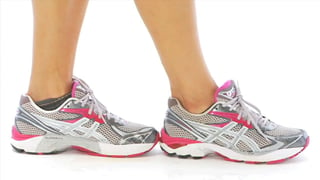 Tandem Stance Balance –
Tandem Stance Balance –
Stand on a level floor with one foot in front of the other, heel to toe. Your arms can be raised and out to the side, or down, whichever is easiest for you. You should be able to stand still in this heel-to-toe position for 30 seconds with your eyes open. Next, close your eyes and stand still in the heel-to-toe position for another 30 seconds.
Stork Stance –
This is another exercise and test of basic ability. Stand on one leg, with both eyes open and arms doing whatever is easiest for you, for 30 seconds without allowing the raised leg to touch the ground. If you can accomplish this baseline test, try it with your eyes closed and compare the two experiences.
Once you know your baseline ability, try some of these other exercises that can be done at home, a local gym, or park:
- Uneven surface “stability trainers” – stand on uneven surfaces, start with the tandem stance balance and/or stork stance. Then try calf-raises and squats whilst in this uneven position to challenge yourself a little more.
 Balance or Indo Board – a board that sits/balances on top of a fulcrum, perhaps a piece of wood or a piece of PVC pipe filled with cement, that the user spreads his or her feet apart to maintain balance (like a skateboard, surfboard, snowboard, etc.). The object is to not let either end of your board touch the ground, thus, remaining balanced for as long as possible. This is a phenomenally effective exercise and a lot of fun to do!
Balance or Indo Board – a board that sits/balances on top of a fulcrum, perhaps a piece of wood or a piece of PVC pipe filled with cement, that the user spreads his or her feet apart to maintain balance (like a skateboard, surfboard, snowboard, etc.). The object is to not let either end of your board touch the ground, thus, remaining balanced for as long as possible. This is a phenomenally effective exercise and a lot of fun to do!
- Plyometric Exercises – these “jump training”, explosive, powerful movement and pivot exercises aid in the development of proprioception, agility and coordination. Squat jumps are one of my all-time favorite exercises!
- Slacklining – walk a 1” wide piece of webbing that is ratcheted tight between two solid object (usually trees). Slacklining is one of the simplest, yet most effective ways to develop balance, body awareness and coordination.
Conclusion
 Adventure activities offer the most effective, unique, holistic, opportunity to develop balance, body awareness and coordination that we modern humans have access to. Because our time is limited, yet our choices of how to spend our time is seemingly unlimited, it is important to give adventure activities a serious try and purposely carve time out of your busy schedule for them. They are worth every second of time you dedicate to them, and every penny you ever spend on them.
Adventure activities offer the most effective, unique, holistic, opportunity to develop balance, body awareness and coordination that we modern humans have access to. Because our time is limited, yet our choices of how to spend our time is seemingly unlimited, it is important to give adventure activities a serious try and purposely carve time out of your busy schedule for them. They are worth every second of time you dedicate to them, and every penny you ever spend on them.
As a teenager or a parent of a teenager, purposely choosing one of the many summer camps for teens that offer plenty of adventure based activities is actually an intelligent decision (especially a small camp). There is no better way to spend your time than to be working towards fulfilling your total potential. Adventure based activities are the most effective way at helping you maximize your potential, and thus your life’s experiences. The earlier you start partaking in adventure based activities the sooner you can fulfill your potential. The earlier in life you fulfill your potential, the better chance you have at “squeezing every drop out of life that it has to offer.”
- Kyle Stapp
Head Guide
Awakening Adventures PA
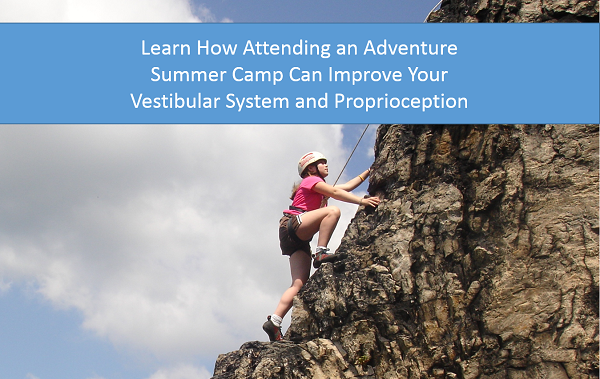
References:
Gray, Lincoln. 2014. Vestibular System: Structure and Function. James Madison University.
Moyer, Lindsey. 2014. What is the Vestibular System and why is it important? Sproutsdevelopment.com and North Shore Pediatric Therapy.
Axe, Josh. 2016. Proprioception Exercises. Retrieved from: https://draxe.com/properioception/
Autism, Asperger’s Climbing as Therapy (AACT). 2016. Every Movement is a Sensory – Motor Event
Tarrant, Michelle. 2003. How to Improve Proprioception. Ideafit.com
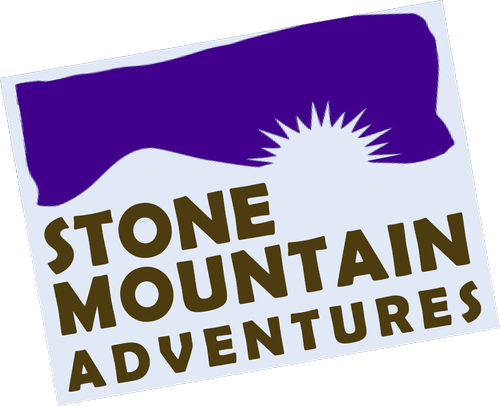

.png)
